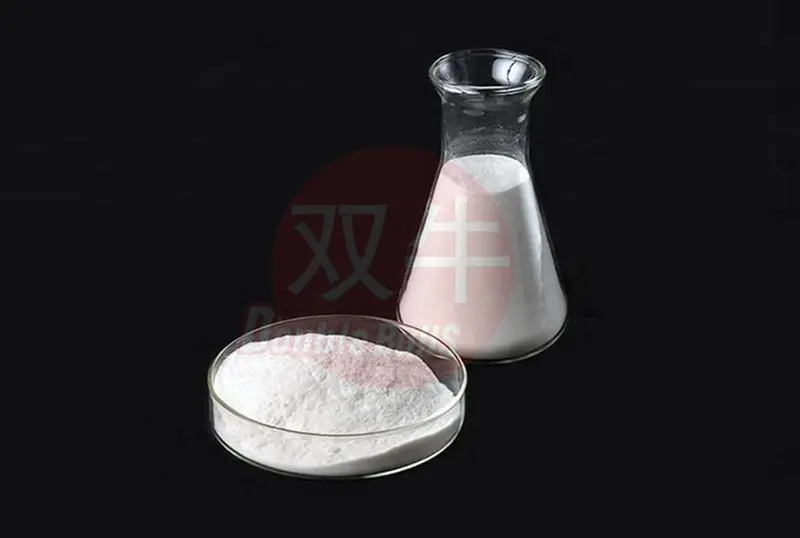cellulose etherIn the water shutoff agent used in energy development (such as oil and gas field water shutoff, shale gas production fracturing fluid plugging and other scenarios), through the interaction of its molecular structure characteristics (such as substituent type, molecular weight, chain segment activity) and water shutoff agent system (such as cross-linking agent, initiator, environmental media), accurate adjustment of gel time and strength can be achieved to meet the plugging requirements under different geological conditions. The following are specific mechanisms and rules:
1、 Regulation mechanism of gel time: control of crosslinking reaction rate
The gel time refers to the time from the liquid state of the water shutoff agent to the formation of a gel like solid. It needs to match the construction cycle (such as the time of pumping to the target formation). Cellulose ether is regulated by the following ways:
1. The influence of cellulose ether's own structure
Molecular weight: high molecular weightcellulose ether(such as high viscosity hydroxypropyl methyl cellulose HPMC) has long molecular chain and dense winding, higher collision probability with crosslinkers (such as borax, metal ions, organic crosslinkers), faster initial reaction rate, and shorter gel time; The ether chain of low molecular weight cellulose is short and dispersed, the crosslinking reaction starts slowly, and the gel time is prolonged.
Substitution degree and substituent type:
The hydroxyl (- OH) of non-ionic cellulose ethers (such as HPMC, hydroxyethyl cellulose HEC) is the active site of the cross-linking reaction. The higher the degree of substitution (the more the hydroxyl is replaced by ether groups), the fewer the active sites, the lower the reaction rate with cross-linking agents (such as borax cross-linked by borate ester bond), and the longer the gel time.
Anionic cellulose ethers (such as sodium carboxymethyl cellulose CMC) have stronger coordination reaction with metal ions (such as Al ³+, Cr ³+) due to the introduction of carboxyl groups (- COO ⁻), and are easier to cross link than non-ionic ones under the same conditions, with a shorter gel time.
2. Synergistic regulation of crosslinking agent types and concentrations
Type of crosslinking agent: the reaction activity of different crosslinking agents with cellulose ether is significantly different, which directly affects the gel time:
Rapid cross-linking: multivalent metal ions (such as Cr ³+, Zr ∨+) and carboxyl groups of CMC quickly form coordination bonds, and gel time can be shortened to several minutes (applicable to rapid plugging near the well).
Medium speed cross-linking: Borax (Na ₂ B ₄ O ₇) forms a reversible borate ester bond with the hydroxyl group of HEC/HPMC. The reaction rate is medium. The gel time can be adjusted by pH (slow reaction under acidic conditions, fast reaction under alkaline conditions), usually 30 minutes to 2 hours (applicable to plugging of medium and deep formations).
Slow crosslinking: the ether bond reaction between organic crosslinking agents (such as polyamide epichlorohydrin) and cellulose ether is mild, and the gel time can be extended to hours or even days (applicable to deep well remote plugging).
Crosslinker concentration: within the critical concentration range, the concentration of crosslinking agent increases, the binding sites with cellulose ether molecular chain increase, the reaction rate accelerates, and the gel time shortens; However, excessive crosslinking will lead to excessive local crosslinking. On the contrary, molecular chain aggregation will hinder the reaction, which may extend the gel time (the proportion needs to be determined through experiments).
3. The regulatory role of environmental factors
Temperature: the temperature increases to accelerate the molecular thermal movement, promote the collision and reaction between cellulose ether and cross-linking agent, and shorten the gel time (for example, the gel time is 2 hours at 25 ℃, and may be shortened to 30 minutes at 60 ℃).
PH value: controlled under acidic conditionscellulose etherThe dissociation of hydroxyl group (non-ionic type) or the ionization of carboxyl group (anionic type) reduces the reaction activity and prolongs the gel time; Alkaline conditions promote the exposure of active sites and accelerate crosslinking (for example, the gel time of CMC at pH=10 is 50% shorter than that at pH=6).
2、 Adjusting mechanism of gel strength: optimizing three-dimensional network structure
The strength of gel determines the pressure bearing capacity of water shutoff agent (such as the stability against formation water scouring). Cellulose ether can be adjusted by adjusting the density and integrity of cross-linked network:
1. The core role of molecular weight and concentration of cellulose ether
Molecular weight: the molecular chain of high molecular weight cellulose ether is long, the three-dimensional network formed after crosslinking has more nodes and longer chain segments, and the mechanical strength (such as compressive strength and elastic modulus) of gel is higher. For example, the strength of gel formed by HPMC with molecular weight of 1 million is 1.5~2 times that of HPMC with molecular weight of 500000.
Concentration: within a certain range (usually 0.5%~5%), the concentration of cellulose ether increases, the molecular chain density increases, the number of cross-linking points increases, the gel network is more dense, and the strength increases significantly; However, excessive concentration can lead to excessive entanglement of molecular chains, which in turn hinders uniform crosslinking and may result in strength saturation or even decrease (requiring adjustment of crosslinking agent ratio).
2. Accurate control of crosslinking degree
Dosage of cross-linking agent: when the cross-linking agent is insufficient, the network structure is loose, the gel strength is low and easy to be dispersed by water flow; When there is an excess of crosslinking agent, the density of crosslinking points increases the brittleness of the network, which is prone to rupture due to stress concentration. For example, when CMC is cross-linked with Al ³+, when the molar ratio of Al ³+and CMC is 1:5~1:10, the strength of gel (measured by breakthrough pressure) can reach 0.5~1.0 MPa. If the ratio is too high (such as 1:2), the strength will drop below 0.3 MPa.
Uniformity of crosslinking reaction: The solubility and dispersibility of cellulose ether affect the uniformity of crosslinking. Cellulose ether with low degree of substitution (such as partially etherified HPMC) dissolves slowly in water, which is easy to form local aggregation, leading to uneven crosslinking and large fluctuation of gel strength; Cellulose ethers with high degree of substitution or surface treatment (such as instant HEC) are more evenly dispersed, with a regular network structure and higher strength stability after crosslinking.
3. Impact of environmental media
Mineralization degree: Ions in formation water (such as Na ⁺, Ca ² ⁺) can affect the swelling and crosslinking efficiency of cellulose ethers. For example, Ca ²+can form additional ionic bonds with the carboxyl group of CMC to enhance network stability and enhance the strength of gel (in high salinity formation, the strength of water shutoff agent containing CMC is 20%~30% higher than that in pure water); However, excessive Na ⁺ may compress the molecular chain electric bilayer, leading to insufficient swelling and a decrease in strength.
Temperature and aging time: at an appropriate temperature (<80 ℃), with the aging time extending, the crosslinking reaction is more sufficient, and the gel strength gradually increases and tends to be stable; High temperature (>100 ℃) will accelerate the degradation of cellulose ether segments, resulting in a decrease in strength over time (requiring the use of antioxidants or the selection of high-temperature resistant cellulose ethers such as methyl cellulose MC).
3、 Summary: Regulation Law and Application Principles
The regulation of cellulose ether on the time and strength of water shutoff agent gel follows the following rules:
Gel time: gel time can be prolonged by reducing the molecular weight of cellulose ether, increasing the degree of substitution, reducing the concentration of cross-linking agent, lowering the temperature or adjusting it to acidity; Otherwise, it will be shortened.
Gel strength: gel strength can be enhanced by increasing the molecular weight and concentration of cellulose ether, optimizing the proportion of cross-linking agent (to avoid insufficient or excessive), and ensuring uniform dispersion and cross-linking; A high mineralization environment (containing Ca ² ⁺, etc.) is usually conducive to strength enhancement, but the effects of high temperature aging need to be controlled.
In practical applications, it is necessary to select the matching cellulose ether type (such as high-temperature resistant HPMC for deep wells and CMC for high salinity formations) based on parameters such as well depth (temperature, pressure), formation water salinity, and construction period of the oil and gas field, and determine the optimal combination of molecular weight, concentration, and crosslinking agent through orthogonal experiments to achieve "on-demand plugging" (such as rapid high-strength plugging near the well and slow long-term plugging far away).


TEL:+86 (0311) 8444 9786
Email:sales@double-bulls.com
Email:Export@double-bulls.com
Address:No.9 Weisi Road, Jinzhou City Eco-nomic Development Zone, Shijiazhuang City, Hebei Province.

Website

Brochure

Video